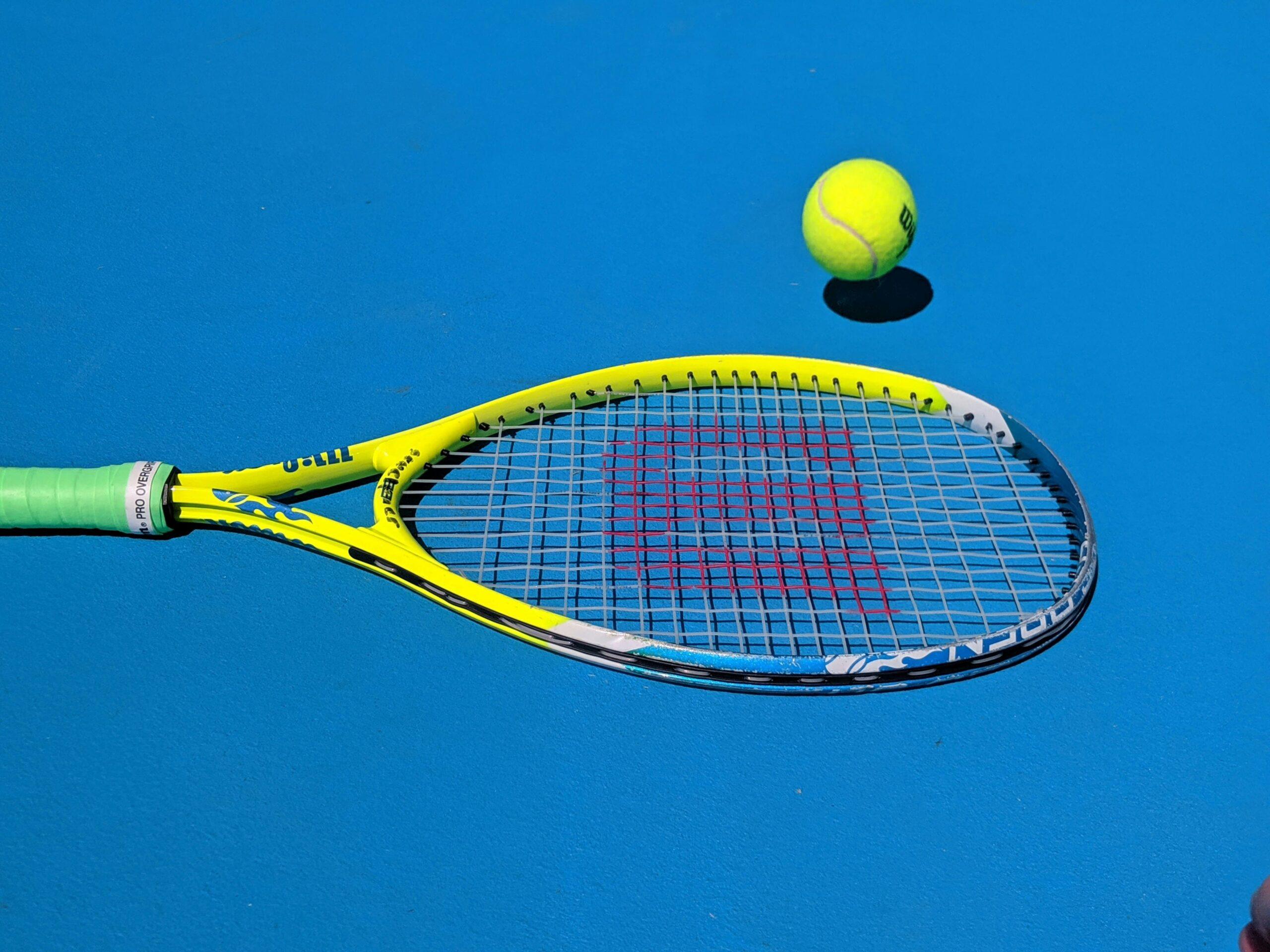In the exhilarating world of tennis, two essential components play a pivotal role in shaping the game – the tennis ball and the tennis racket. These seemingly simple objects are the keystones of a sport that demands precision, skill, and strategy. Let’s delve into the fascinating synergy between the tennis ball and racket that defines the essence of this fast-paced and competitive game.
Real all the important information about Tennis ball and Tennis Racket
The Tennis Ball:
A small, fuzzy yellow orb with a rubber core – the tennis ball is the heartbeat of the game. Its design and composition have evolved over the years, aiming to strike the perfect balance between bounce, speed, and durability.
**Materials and Construction:**
Modern tennis balls are typically made of a hollow rubber core covered in a felt or wool fabric. The felt covering provides the signature fuzzy texture and influences the ball’s aerodynamics during play. The internal pressure of the ball is carefully regulated to ensure consistent bounce characteristics.
**Bounce and Speed:**
The interaction between the tennis ball and the court surface is a critical factor in the game. Different court types, such as clay, grass, and hard courts, impact how the ball bounces. Players must adapt their strategies based on the court surface to maximize their performance.
The Tennis Racket:
The tennis racket, an extension of the player’s arm, is a sophisticated piece of equipment designed to harness power, control, and spin. Racket technology has undergone remarkable advancements, offering players a wide array of options to suit their playing style.
**Materials and Frame Construction:**
Early tennis rackets were made of wood, but modern rackets are constructed using materials like graphite, carbon fiber, and various composite materials. The racket’s frame design, including head size, string pattern, and weight distribution, significantly influences a player’s ability to control the ball.
**Power and Control:**
The choice of a tennis racket is a deeply personal decision for players. Some prefer rackets with larger head sizes for increased power, while others opt for smaller heads for enhanced control. String tension and pattern also play a crucial role in dictating the feel and performance of the racket.
The Symbiotic Relationship:
The magic of tennis happens when the ball meets the racket. The interplay between these two elements is where strategy, skill, and athleticism converge.
**Spin and Precision:**
Players use the strings of the racket to impart spin on the ball, creating a trajectory that can confound opponents. The type of spin, whether topspin, backspin, or sidespin, adds a layer of complexity to the game. Racket technology enables players to fine-tune their shots, from powerful serves to delicate drop shots.
**Adaptability on Different Surfaces:**
The tennis ball and racket dynamic is constantly evolving during a match, especially on different court surfaces. Players must adjust their technique to account for variations in ball bounce and speed. The ability to adapt the racket angle and contact point is crucial for success on diverse surfaces.
Conclusion:
In the dance between the tennis ball and racket, each move is a carefully calculated step that defines the outcome of the game. The evolution of both these elements reflects the commitment to excellence and the pursuit of perfection within the sport of tennis. As technology continues to push the boundaries, the symbiotic relationship between the tennis ball and racket will undoubtedly shape the future of this thrilling and timeless game.



